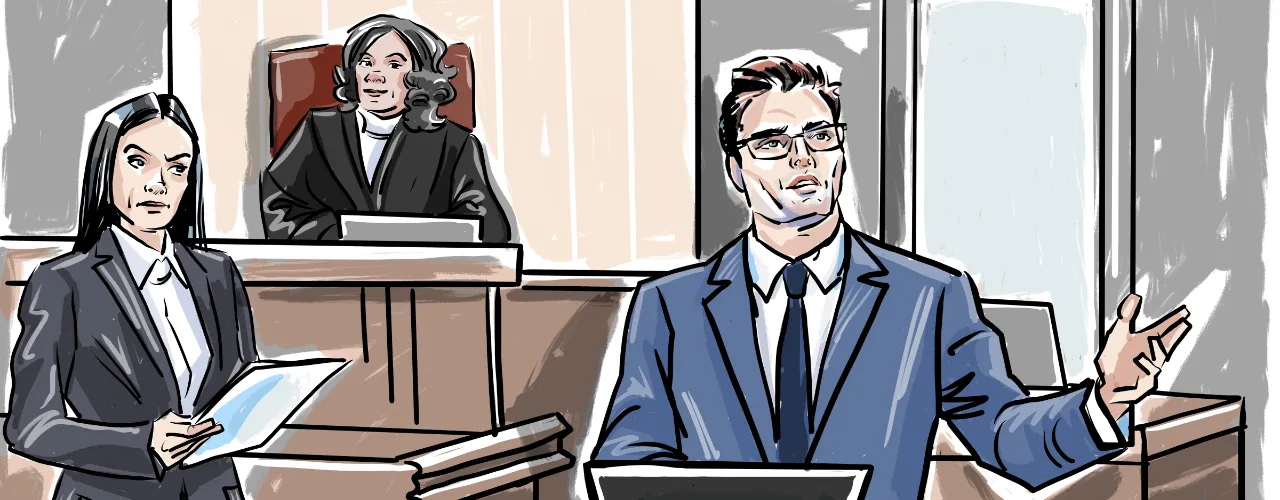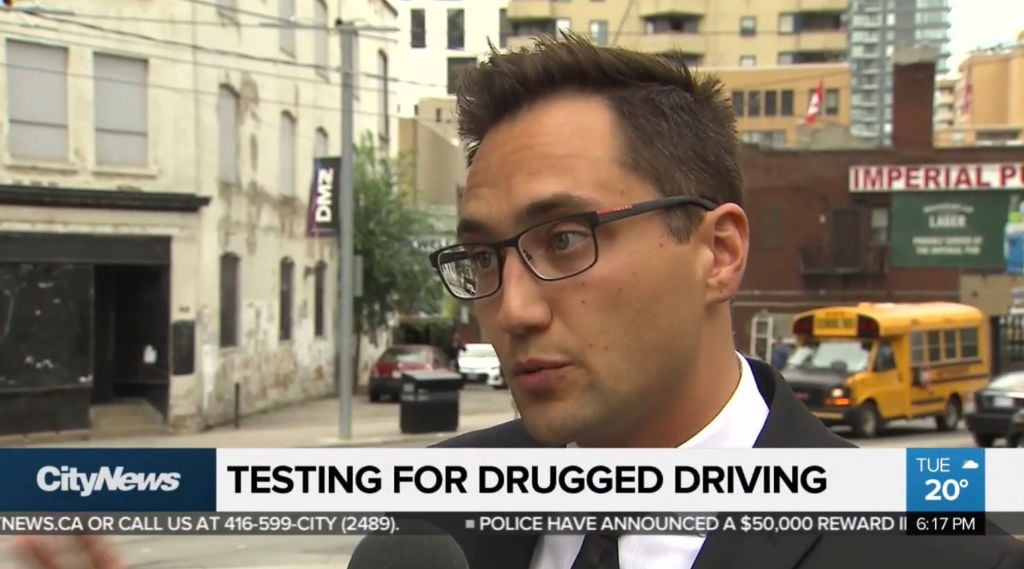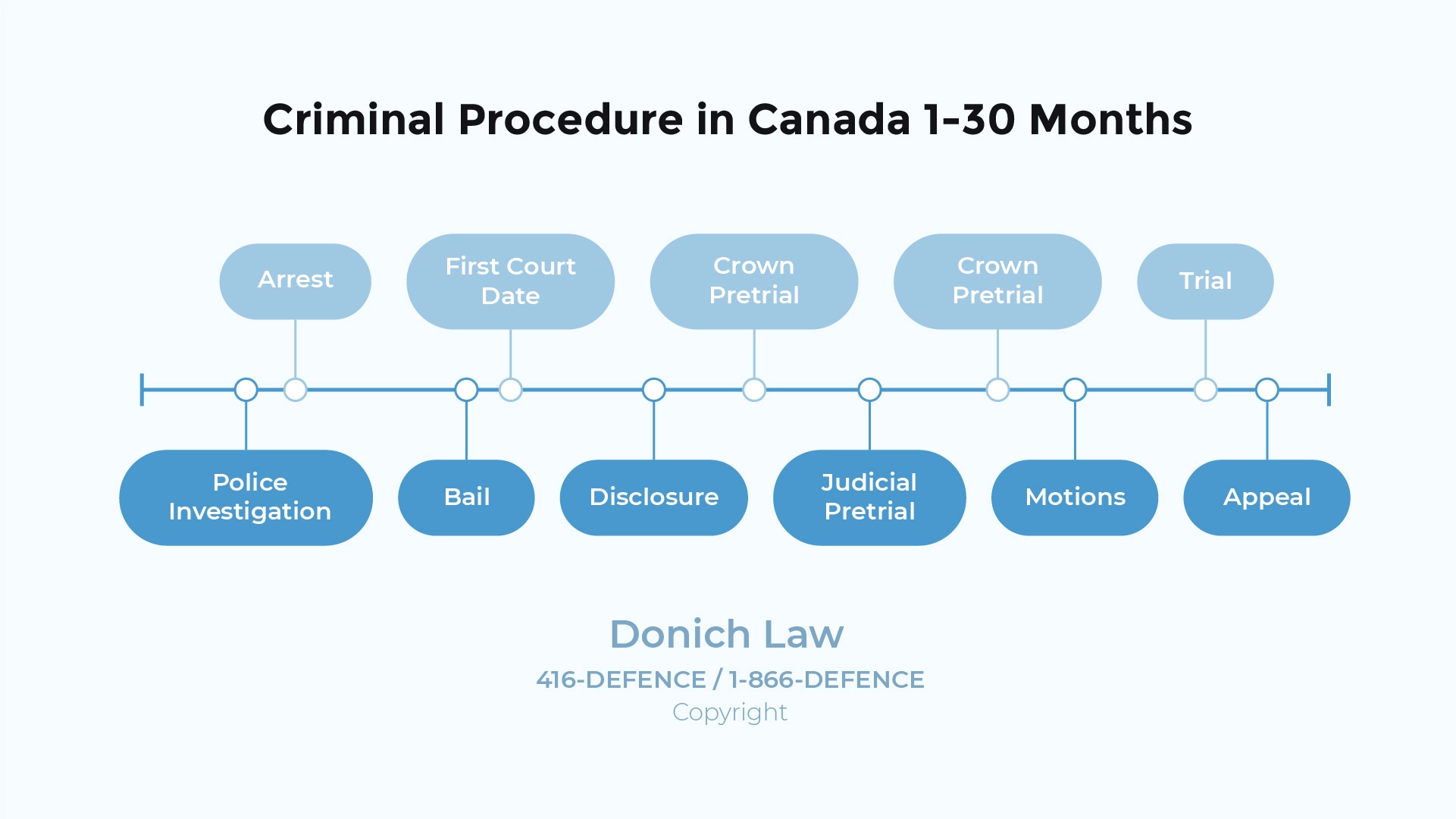
Defend Dangerous Driving Charges
Frequently Asked Questions
Dangerous driving offences including dangerous driving causing bodily harm and death are very serious offences. Due to the serious public safety concern dangerous driving causes, Crowns and the courts have taken a strong stance on sentencing those who are reckless on the road. This is especially true where serious injuries or death is caused. When determining the moral blameworthiness of an individual charged with dangerous driving, the court will consider the standard of care expected of drivers on the road and what a reasonable person would have done in the same situation.
Donich Law has experience defending individuals charged with a wide array of driving offences including impaired driving offences and dangerous driving offences. When defending a case of dangerous driving, it is important for the defence to collect all the available evidence they can. This may include evidence not in the possession of the Crown and not part of the disclosure package. Those accused of driving offences are urged to save any evidence they may have that may help their case including dash cam footage.
Being convicted of a dangerous driving offence has the potential to seriously impact an individual’s life. Where another individual suffered serious bodily injury or death as a result of the accused’s dangerous driving, there is a very strong possibility they will be sentenced to a period of incarceration. In addition to the criminal penalties associated with dangerous driving, the province of Ontario may also suspend or revoke the accused’s driver’s license. Further, it is likely than an individual’s insurance will increase following a conviction for any criminal driving offence. If you have been accused of dangerous driving it is important to consult with legal counsel as soon as possible to best protect your rights.

- CityNews: How Police will test for Drugged Driving?
- CP24: Civil Sexual Assault Lawsuit at St. Michael’s in Toronto
- CityNews: Jordan Donich comments to CityNews regarding challenges with Sexual Assault Trials in Toronto
- CityNews: Jordan Donich provides expert commentary to CityNews regarding Sexual Assault Prosecution.
- Breakfast Television: Role of Mental Health in Court Proceedings.
- Global News National: Bruce McArthur will not serve consecutive sentences.
- CTV News National: Handgun ban supported by majority of Canadians: Nanos survey.
- CP24: Sentencing Hearing for Chair Girl.


What is Dangerous Driving Causing Death and Dangerous Driving Causing Bodily Harm?
Dangerous driving causing death and dangerous driving causing bodily harm are two criminal offences set out under ss. 320.13(2) and 320.13(3) of the Criminal Code respectively. They are both offences connected to the broader offence of dangerous driving. A person will be charged with dangerous driving where they are found to “operate a conveyance in a manner that, having regard to all of the circumstances, is dangerous to the public.” Within the Code, the phrase “operate a conveyance” means to drive or have care and control over any kind of vehicle. These offences are usually applied to individuals driving cars. The result of a person’s dangerous driving will determine what specific offence they are charged with.
As an example, consider that Person A is driving their car 20 kmph over the posted speed limit and is randomly swerving between lanes on a busy road. At some point while driving like this, Person A passes a police officer who then attempts to pull them over. At this point, Person A would likely be charged with dangerous driving. However, if Person A collides with another driver before the police can stop them, they may be charged with either dangerous driving causing death or bodily harm depending on the condition of the other driver after that accident.
What is Bodily Harm?
Bodily harm is defined under s. 2 of the Code as “any hurt or injury to a person that interferes with the health or comfort of the person and that is more than merely transient or trifling in nature”. In plain language, this means any sort of injury that would be longer lasting that a minor bruise, or scrape. Bodily harm would of course cover more serious injuries such as broken bones, concussions, or significant cuts as they have a significant impact on the health and comfort of the victim. In the context of someone involved in an accident caused by dangerous driving, either as a pedestrian or as another driver, examples of bodily harm might include whiplash, or a cut resulting from a head colliding with a steering wheel that requires stitches.
Stages of the Criminal Justice System

How Does the Crown Prove Dangerous Driving Offences?
The elements that the Crown must prove beyond a reasonable doubt to establish an accused person’s guilt are specific to the offence that they are charged with. However, there are three elements that are common to every offence. They are the identity of the accused, the date and time of the incident, and the jurisdiction which establishes that the case is being heard in the proper place and in the proper court. Once those issues are settled, the Crown must then prove the elements specific to the offences of dangerous driving causing death or bodily harm.
The first element that must be proven is that the accused operated a vehicle according to the definition discussed above. Then the Crown must prove that the accused’s driving was dangerous to the public. This might be proven by introducing evidence that the accused had been ignoring road signs, was swerving, and/or had collided with other drivers or objects. The Crown must also prove that the accused knew or ought to have known that their driving posed a risk to others. Once the dangerous nature of the driving is proven, the case will turn to the elements of death or bodily harm depending on the charged offence. For either type, the Crown must prove that another person either died or suffered bodily harm and that that harm was the result of the accident. If all these elements are proven to the required standard, the accused will be sentenced for the applicable offence.
What are the Penalties Associated with Dangerous Driving Offences?
Driving is considered a privilege and is an activity that requires a license. As such, the law has been formed under the principle that society should be protected from individuals who pose a threat to the health and safety of others because of their dangerous driving. When a person is sentenced for dangerous driving causing bodily harm, they are being sentenced for a hybrid offence. Hybrid offences give the Crown access to the widest possible range of sentencing options by allowing them to choose how to prosecute each individual case. More serious instances of offences are classified as indictable offences while the less serious are referred to as summary offences.
Because of the seriousness of both dangerous driving causing death or bodily harm, both offences carry minimum sentences. The minimum sentence for a first indictable offence causing bodily harm is a $1,000 fine. A second offence carries a mandatory 30-day period of imprisonment, and any additional offences will result in at least 120 days imprisonment. The maximum indictable punishment is 14 years imprisonment.
Summary offences carry the same minimum sentences as indictable offences, but the maximum for this category of offence is a $5,000 fine and/or two years less a day imprisonment. Given the severity of dangerous driving causing death, it is a straight indictable offence. It carries the same minimums set out above up to a maximum of life imprisonment. Beyond, the sentence an offender receives they may also be subject to certain ancillary orders, including a prohibition on driving and other forms of liability under provincial driving legislation like Ontario’s Highway Traffic Act.
What’s a Crime in Canada?
What will Happen if I am Charged with Dangerous Driving?
What happens to a person charged with a type of dangerous driving offence depends on the circumstances of their case. If they are stopped by the police at the scene of an accident that they caused, the police may be able to determine the condition of the victim on the spot. If the victim has clearly suffered bodily harm or died, the driver will be charged accordingly. If the status of the victim is unclear, the driver may be charged with dangerous driving and that charge will change as necessary. For example, if a victim is critically hurt at the scene and dies a few days later in the hospital from their injuries, the charge against the driver will be upgraded.
Depending on the facts of each case, the police may charge a driver with other related offences such as failing to remain at the scene of accident. Additionally, based on the severity of the situation, the police may arrest the accused and hold them for bail. Bail, or judicial interim release, is the process by which an accused person may be released back into the community while awaiting trial, so long as they abide by certain conditions. The more serious the offence the accused is alleged to have committed, the stricter their conditions will be. At very least, in dangerous driving cases the accused will be prohibited from driving. In extreme cases, it may take several weeks for the Crown and defence counsel to agree on an appropriate release plan and for a bail hearing to take place. During that time, the accused would remain in detention.
Law Newbie is a free AI research assistant that can help you safely answer questions about criminal law.




Recent Cases
R. v. Linton, 2022 ONCJ 197
This Ontario Court of Justice case dealt with an offender being sentenced for both dangerous driving causing death and dangerous driving causing bodily harm. The facts of the case revealed the driver had elected to pass a line of cars in front of him at a dangerous point in the road. While passing the cars, the driver had moved his vehicle to the opposite lane and increased his speed to do so. This led him to collide with oncoming traffic. The collision resulted in the death of the other driver as well as permanent injuries to her two passengers.
The tragic results of an accident caused by dangerous driving are not the only factors that a court must consider in these cases. It was relevant to sentencing that the offender submitted to an uncontested trial, had no previous criminal or traffic violations, he was not under the influence of drugs or alcohol at the time of the incident, and that he was also seriously injured. Other than the fact that the offender’s actions were a deliberate choice, there were few facts that justified a strong sentence. He was given a total conditional sentence of two years less a day. “Notwithstanding the horrific consequences of the offender’s deliberate conduct, when doing my duty and applying the law as dispassionately and as even-handedly as possible, a penitentiary sentence in this case is not needed to hold this offender accountable nor is it necessary to denounce his conduct and deter others in similar circumstances.” [at para 28]
R. v. He, 2021 ONSC 7253
This Ontario Superior Court of Justice case provides an example of how the Crown proves the elements of dangerous driving causing death. The incident at issue involved the offender running a red light and striking a pedestrian who was using the crosswalk. The victim died from the injuries they sustained from this accident.
The evidence revealed that the offender clearly ran a red light and struck the victim who was clearly within the line of sight. Disobeying the rules of the road without a personal or mechanical reason for that behaviour is clearly dangerous. Video of the event showed that cars approaching from the opposite direction had time to stop at the light. This proved that the offender ought to have known that their actions were dangerous. The offender was also unable to provide any evidence to show that they were unaware of their actions. Therefore, they were convicted of the charged offence.











